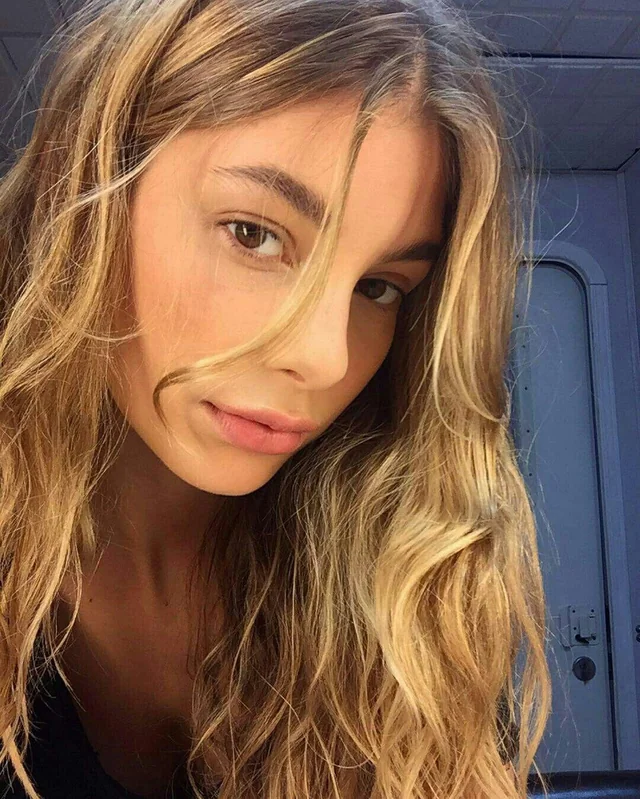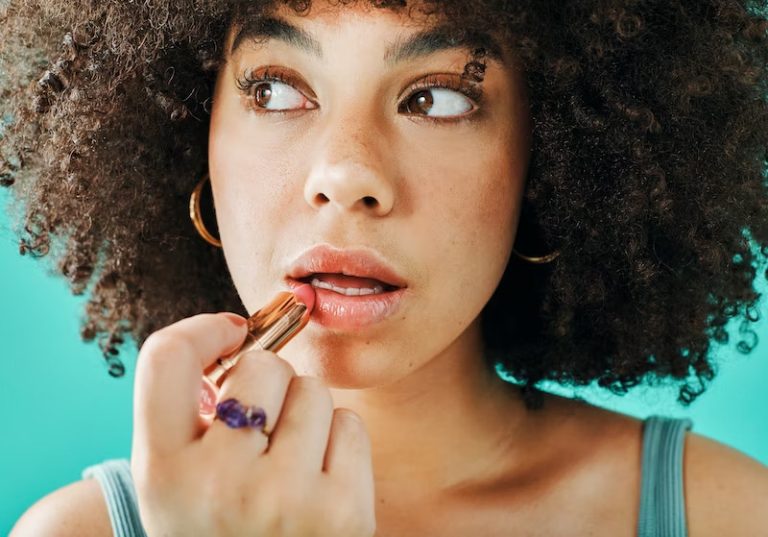Is Blonde Hair And Brown Eyes Rare?
Having both blonde hair and brown eyes is an uncommon combination that many find strikingly beautiful. But just how rare is it to have golden locks paired with rich, chocolate-colored eyes?
The mix of blonde hair and brown eyes occurs infrequently for genetic reasons. To understand why this combination is unusual, we must first examine how genetics impact hair and eye color.
Factors That Influence Hair and Eye Color
Contents
- Factors That Influence Hair and Eye Color
- Explaining the Rarity of Blonde Hair and Brown Eyes
- Percentages for Blonde Hair and Brown Eyes
- Ethnic Backgrounds with Blonde and Brown Eyes
- Genetic Factors In Eye Color Determination
- Makeup Tips for Blonde and Brown
- Blonde Hair and Brown Eyes Combos Stand Out
- Key Takeaways: Is Blonde Hair and Brown Eyes Rare?
The production of melanin pigment is primarily responsible for determining human hair and eye color. Melanin is the substance that gives color to skin, hair, and eyes. It comes in two forms:
- Eumelanin – Brown and black melanin
- Pheomelanin – Red and yellow melanin
People with high levels of eumelanin tend to have brown or black hair with dark brown eyes. Those with increased pheomelanin production tend to be blonde with blue/green eyes.
Common Hair and Eye Color Combinations
The most frequent pairings of hair and eye color occur when melanin levels are consistent across both traits.
- Blonde hair with blue or green eyes
- Brown or black hair with brown eyes
Blonde hair and light colored eyes often coincide since they both stem from low eumelanin. Over 70% of natural blondes have blue eyes.
Uncommon Combination: Blonde Hair and Brown Eyes
It is less common for someone to have very pale blonde hair with rich brown eyes. This mix arises when eumelanin production differs dramatically between the two traits.
- Low eumelanin in the hair results in blonde color.
- High eumelanin in the iris leads to brown eyes.
Additionally, brown eyes are linked to increased melanin levels overall. They usually occur with darker hair and deeper skin tones.
Explaining the Rarity of Blonde Hair and Brown Eyes

Only a small percentage of the population has blonde hair paired with brown eyes. But why does this combination rarely manifest?
Blonde Hair Points to Low Melanin
Very light blonde hair occurs when little eumelanin is present. For platinum blonde color, melanin production is extremely low.
Having pure blonde hair signifies that melanin levels are reduced throughout the body. This often translates to:
- Pale or fair skin
- Light eye color such as blue, green or gray
- Low melanin in hair follicles
Since blonde hair indicates low melanin, it regularly pairs with other low melanin features.
Brown Eyes Require High Melanin
Brown eyes are the result of ample eumelanin in the iris. Darker eye colors need elevated melanin content to develop.
For brown eyes to occur, significant eumelanin must be synthesized and deposited into the iris. This is the opposite of conditions that lead to blonde hair.
Brown eyes are also connected to increased melanin systemically. People with brown eyes tend to have:
- Darker hair colors
- Deeper complexions
- Higher melanin overall
Mismatch of Melanin Levels
When blonde hair arises with brown eyes, it signifies starkly different eumelanin levels within the same person. The blonde hair points to low melanin, while brown irises require plentiful eumelanin.
For this mismatch to happen, melanin production must be:
- Deficient in the hair follicles (blonde hair)
- Abundant in the iris (brown eyes)
This divergence in melanin levels is unusual. Most people have uniform high or low melanin production across hair, skin, and eyes.
Percentages for Blonde Hair and Brown Eyes

Globally, how common is the combination of blonde hair with brown eyes? The unique mix occurs in a small portion of the population.
United States Statistics
In the United States, only 0.1% of white children are born with blonde hair and brown eyes. The pairing is considered very rare.
Overall, just 2% of Americans have natural blonde hair today. Of this blond group, most have blue eyes. Brown is the most common eye color at around 50% of the US population.
But brown eyes paired specifically with blonde hair is unusual. Even in the blonde minority, most have light eyes.
Worldwide Prevalence
When looking at global numbers, blonde hair with brown eyes makes up a low percentage of people.
Worldwide, natural blonde hair occurs in only 2% of adults. Brown eyes are far more prevalent at around 50% of the world’s population.
Given these statistics, the pairing of blonde and brown is rare across ethnicities. Only 5% of natural blondes have brown eyes.
While globally uncommon, the highest rates occur in certain ethnic groups.
Ethnic Backgrounds with Blonde and Brown Eyes
The blonde hair and brown eyed combination mainly manifests in those of European descent. Within this population, the look is most prevalent in:
Germanic and Slavic Ethnicity
People of German, Polish, Czech, Ukrainian, and Russian heritage are most likely to have blonde locks and rich brown eyes.
In these groups, fair features blend with high melanin levels in the eyes. Light hair combines with darker eyes, skin, and complexion.
French and Northern Italian
Those with French or Northern Italian ancestry also exhibit higher rates of blond hair with brown eyes.
In these ethnicities, pale features intermix with darker Mediterranean traits. This blending can produce blond hair alongside brown eyes and olive skin.
Less Common in Northern European Groups
Blonde hair with brown eyes is less common among those with ancestry from:
- Scandinavia
- Britain
- Ireland
- Finland
In these very fair-skinned groups, blue and green eyes overwhelmingly prevail with blondeness. Brown eyes are atypical among Nordic and Celtic people with naturally light hair.
Genetic Factors In Eye Color Determination
If blonde hair signifies low melanin, why might brown eyes develop in the same person? The genetics behind eye color play a key role.
Melanin Content of the Iris
The amount of melanin made and stored in the iris dictates eye color. More melanin results in brown/dark eyes. Less melanin produces blue/green eyes.
- Brown eyes = high melanin
- Green eyes = moderate melanin
- Blue eyes = low melanin
Genes Involved in Eye Color
Research identifies several genes that help direct eye color by controlling melanin production and distribution:
- OCA2 – Most influential gene, located on chromosome 15
- HERC2 – Regulates OCA2 expression
- SLC24A4 – Melanin transport within iris cells
- TYR – Converts tyrosine into melanin pigment
These genes combine to generate a spectrum of eye colors based on melanin content.
Interplay of Genes Produces Eye Color
Complex interactions between multiple genes ultimate determine someone’s eye color.
Each gene makes small contributions to melanin levels in the iris. Different combinations of active genes mix together to produce eye color.
This intricate interplay allows for variation in melanin and resulting eye color. The same genes may interact differently within the same person.
Makeup Tips for Blonde and Brown
If you have the rare combination of blonde hair and brown eyes, play up both features with enhancing makeup.
Analyze Face and Eye Undertones
Choosing flattering makeup begins with identifying undertones.
- Blonde hair generally pairs with cool pink skin undertones.
- Brown eyes are associated with neutral undertones.
But undertones can vary. Assess your personal hues.
Conceal Circles and Discoloration
Brown eyes may show darkness or shadows around the eyes. Use a peach color corrector to neutralize and brighten those areas.
Lightly conceal inner corners and below lower lashes to make brown irises pop. Avoid thick concealer which can settle into fine lines.
Eyeshadow to Complement Brown Eyes
Play up brown eyes with eyeshadow shades that make them stand out.
- Peach and coral – Flattering on most complexions
- Purple and plum – Enhance brown while making green flecks pop
- Bronze and gold – Warm metallics to illuminate
- Brown – Matte and shimmer Browns to define
Avoid black shadow, which is too harsh. Sweep lighter tones on the lid and inner corners. Use mid-tones in the crease. Darker accents go on the outer corners.
Eyeliner and Mascara for Blonde Lashes
Define eyes while subtly enhancing your features:
- Brown eyeliner over black, for a softer look. Use dark brown pencil on the upper lashline.
- Brown mascara to play up blonde lashes. Black mascara may appear too heavy.
Apply lighter coats of mascara and focus on the outer top and lower lashes.
Cheeks and Lips for Harmony
Tie your makeup together with coordinated blush, bronzer, and lip colors.
- Rosy blush in mauve, pink, peach, coral. Sheer application avoids harshness.
- Matte bronzer can serve as blush and contour. Add warmth while subtly defining.
- Nude lips in shades of peach, pink, rose. Avoid very light or very dark lipsticks.
Blonde Hair and Brown Eyes Combos Stand Out
While relatively uncommon, blonde hair paired with brown eyes can create a striking, beautiful look. The mix of light and dark makes the contrasting features radiate.
What ultimately matters is embracing your special combination of colors. With the right haircut, eye makeup, and confidence, blonde and brown can allow your beauty to shine.
Key Takeaways: Is Blonde Hair and Brown Eyes Rare?
- Blonde hair with brown eyes is globally uncommon, occurring in only 0.1% of Americans and 5% of blondes worldwide.
- Blonde hair results from very low melanin levels. Brown eyes require ample melanin production. This mismatch is rare.
- Ethnic groups with higher rates of natural blonde and brown include those of German, French, Polish, Italian, and Eastern European descent.
- Multiple genes interact to determine eye color based on melanin content and distribution in the iris.
- Makeup tips for blonde and brown include peach correctors, warm eyeshadows, brown liners and mascara, and rosy cheeks.

Founded by Sophia Rodriguez, IGXO Cosmetics is a PETA-certified, cruelty-free, and vegan makeup brand.





